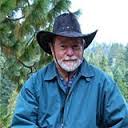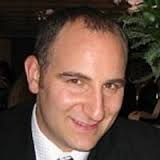Innovators attempting to innovate generally experience resistance and this is not a bad thing. Change, unavoidable for progress is dangerous, and as such, requires risk prudence to insure it will be useful and valuable enough to justify. Innovators must repeatedly alter and justify their actions to iterate toward workable solutions. Although initial forays do not always succeed, they serve as foundations supporting subsequent efforts to achieve the critical mass required for change to occur. In other words, innovators are necessarily agents of change and as such need to rapidly determine boundaries they need to operate within in order to contribute value in any given situation.
Boundaries always exist, at times between departments, divisions, enterprises, markets and nations, but most often in terms of mental models, which usually arise to cope with political and fiscal realities. Everyone has to prioritize and categorize, sometimes rigidly and other times permitting degrees of freedom to exist. We all adhere to the constraints of the mental models we adopt, even if we are the creators of those models. These models exist to help us predict the future by limiting the unknown or unknowable. Models are not reality, and can change either more quickly or more slowly than reality does. Herein lies one inherent divide between decision makers and innovators – adherence to prior models. This chasm is regularly crossed by the two parties negotiating boundaries. This is not to say that decision makers are not innovators. Successful decision makers innovate to remain decision makers, but as change agents they have the responsibility to preserve and preside over smooth operations by prudently defending against less calibrated innovators. These two roles are relativistic because they are situation dependent.
Which side of the divide one finds themselves has to do with resource allocation. If the innovator is in charge of allocating larger organizational resources then they are also the decision maker but it is likely they will need to justify their actions to another decision maker above them. Presidents still report to boards or congress or someone. We all have to justify our actions not just to ourself but to others. And we all lead some of the time even if it is just ourselves.
As leaders, innovators and change agents, it is always useful to attempt to put yourself in the places of those above and below you in order to better understand perceived and real needs, and perceived and real boundaries. All of us are constantly adapting to both changing circumstances and the way in which others adapt to their changing circumstances. We do this to survive and each of us play all of the roles beginning at early ages. When a six year old is left to watch the family dog for even five minutes they begin to be faced by these issues. All people adapt – that is their job to adapt, grow and mange change. We are all in charge of some innovation some of the time. And we are all subject to others needs at the same time. Try to look all around you and above and below too whether you are adapting, changing, innovating, following or leading.


